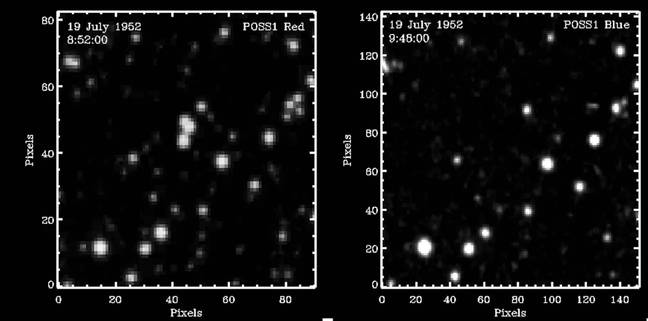A group of astronomers discovered around 100 stars have disappeared from view in the last 70 years – and they don’t know why.
However, it’s not just three stars that are leaving astrologers bemused, but around 100 which have seemingly vanished from view in the last 70 years – a project titled Vanishing and Appearing Sources during a Century of Observations (VASCO) discovered.
Headed up by the Nordic Institute for Theoretical Physics’ Beatriz Villarroel, in 2017, VASCO used data from 70 years ago, and compared it to more current data.
For the historical data, it looked at a series of sky images taken by the Samuel Oschin Telescope from on top of Palomar Mountain, California in 1949, scanned by the US Naval Observatory (USNO).
The modern data was collected by the Panoramic Survey Telescope and Rapid Response System (Pan-STARRS), captured from the Haleakalā Observatory in Hawaii between 2010 and 2014.
The team then compared the historical and more current images of the sky, using software to analyse the light sources they expected to appear in both sets of data.
Of the 600 million light sources anticipated, 150,000 initially appeared to have disappeared from the when the images were taken in 1949 compared to the images from 2010 to 2014.
A ‘subset’ was later arrowed down to ‘about 24,000 candidates’, according to the study published in The Astronomical Journal.
Villarroel tells space.com: “You can never guarantee it’s not a [photographic] plate defect. But you can do some tests in order to eliminate the most obvious things.
“Then you go to the deeper catalogs like the Sloan Digital Sky Survey (SDSS) or the new Dark Energy Camera Legacy Survey to see if you can find any remains of the object on these, and depending on what you find that might give you different types of candidates.”

The number was then further narrowed down to around ‘100 point sources,’ ‘redder and [with] larger proper motions than typical USNO objects’ that had seemingly vanished across the 70-year period.
But what could have caused the light sources to disappear from view in less than a century?
Well, Villarroel explains it could be a result of ‘some kind of optical afterglow from gamma-ray bursts or fast radio bursts’.
“Such outbursts are predicted to have super-big amplitudes of about eight to ten magnitudes, but fade in just a few minutes, and don’t seem to have any kind of visible counterpart when we look at the locations with big telescopes,” she says.

Or it could the result of a ‘failed’ supernova – a huge star collapsing into a black hole so drastically it leaves no trace behind. However, this sort of occurrence is incredibly rare.
Asteroids could also have had an impact, or gravitational lensing which creates visible distortions.
Alien life has also been debated, other life using the hypothetical structure of the Dyson Sphere – ‘a mega-engineering project that encircles a star with platforms orbiting in tight formation,’ as explained by space.com – to generate energy.
Ultimately, astronomers remain stumped – at least for now, Villarroel resolving: “We don’t know of any processes where a star would just vanish, except for this hypothetical failed supernova. Therefore vanishing stars become interesting because we haven’t observed such things in nature. The main principle was to look for things we would think of as being impossible.”

Dr. Thomas Hughes is a UK-based scientist and science communicator who makes complex topics accessible to readers. His articles explore breakthroughs in various scientific disciplines, from space exploration to cutting-edge research.








